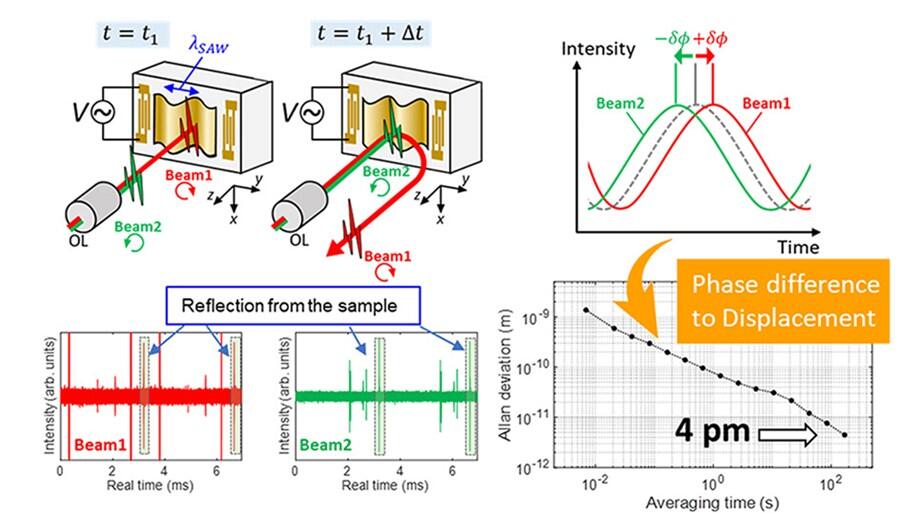A research group led by second-year Master's student Ayaka Iwasaki, third-year doctoral student Daichi Nishikawa, and graduate student Shoma Tateno, who completed a Master's degree in 2009, of the Faculty of Science and Technology, Keio University, and a research group led by Masato Okano, full-time lecturer (at the time of the research), Assistant Professor Kazuto Yamanoi, Professor Yukio Nozaki, and Professor Shinichi Watanabe, of the Department of Physics, Keio University, has succeeded in quantitatively determining the displacement of extremely small vibrations occurring on the surface of a surface acoustic wave (SAW) device with picometre accuracy. The use of surface acoustic waves is expected to be applied to the accurate characterization of electrical and magnetic devices in the future. The group's findings were published in APL Photonics and selected as a featured paper.

© 2022 Author(s). Published by AIP Publishing
SAW devices are used as filters to cut unwanted frequency components in mobile phones and smartphones. They have also been used to manipulate electron spin and are seen as a promising next-generation magnetic device.
In SAW devices, Rayleigh waves (surface waves) propagate over the surface of the device. Accurately measuring how many meters the device surface is vibrating (displaced) during Rayleigh wave propagation is extremely important in evaluating the performance of a device. Laser interferometers have been used to measure such displacements, but conventional laser interferometers often suffer from the problem that it is extremely difficult to separate the light reflected from the surface of the device from the reflected light from other parts of the optical system, which causes a loss of quantitative measurement performance.
The research group used a dual comb interferometer, which can conduct simultaneous interferometric measurements of light at multiple wavelengths, to improve the quantitative nature of the measurements by isolating and extracting only the signals from the reflective surface to be observed. Furthermore, by devising an optical system that compares the phases of two lights that pass through the same optical path in opposite directions, they created a measurement system with a small measurement uncertainty that eliminates the influence of the instability of the optical path. As a result of these innovations, they succeeded in determining the amount of vibration of the surface acoustic wave with a four-picometre accuracy, the highest accuracy achieved with a dual-comb interferometer.
The research group plans to estimate the magnetic field generated from quantitative vibrations on the surface of a device and investigate its efficiency to reveal the origin of magnetic excitation by surface acoustic wave excitation.
This article has been translated by JST with permission from The Science News Ltd.(https://sci-news.co.jp/). Unauthorized reproduction of the article and photographs is prohibited.




